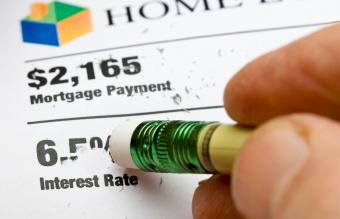
A rent-to-own contract for a house establishes a lease between a homeowner and tenant, and gives a tenant the ability to apply rent payments to the home's list price when put on the market, or a right of first refusal to purchase the house. Use the sample contract to see what a typical rent-to-own agreement would entail.
Sample Rent-to-Own Contract
To view an example of a rent-to-own contract for a home, click the image below. This sample contains basic terms for a rent-to-own contract, provided for information purposes only.

After you click the image, it will open as a PDF document that you can download, review, edit, save and print. For assistance working with the file, see this guide for printables.
Understanding the Agreement
The example contract provided here is intended for informational purposes only. It is not offered as legal advice and should not be used as-is. The specifics of the home, location, circumstances, state law, and parties' intent should govern any contract. Always consult with a lawyer prior to entering into any legal agreement.
Identification of Parties and Property
The first part of this sample contract identifies the parties and the property to be leased and potentially sold and purchased. In this section, specificity is paramount; therefore, be sure to insert full names and the entire property address. This ensures that there is no question about who is bound by the contract or what property the contract is intended to include.
This section also establishes that the parties to the contract have the legal right to enter into the agreement. This is necessary for the contract to be enforceable.
Contractual Obligations
The second part of this contract sets out what the homeowner, meaning the property owner, and the tenant must do after entering into the contract. The terms in the sample contract are basic and are allowable under most state's laws.
This section sets out the length of the lease, amount of rent, and any security deposit due to establish the lease element of the contract. In most states, these sections must be completed for the contract to be considered valid.
Purchasing Rights
The third section of this contract establishes the rent-to-own option. This section doesn't require that the tenant purchase the property, but does require that the homeowner offer the property for sale to the tenant at a specific point in time. This requirement is what takes the contract outside a normal rental agreement.
The obligations and rights of the parties that are established in this contract are basic and required for formally creating this type of agreement. Additional obligations and responsibilities can be added to, and others removed from, this contract if set forth in writing and signed by both parties.
Termination Clauses
The final portion of this contract sets forth what happens if either party abandons the property or does not fulfill all contractual obligations. This clause protects both parties in the case that the other party does not perform their side of the contract.
Completing the Contract
The end of the contract contains the execution portion. For the contract to be considered valid and in force, this section must be signed and dated by both parties and notarized.
Seek Qualified Legal Counsel
If you are entering into this type of agreement, it is critical that you seek legal counsel first. Consult with a licensed attorney knowledgeable about real estate in your area before you offer or agree to a rent-to-own agreement.







